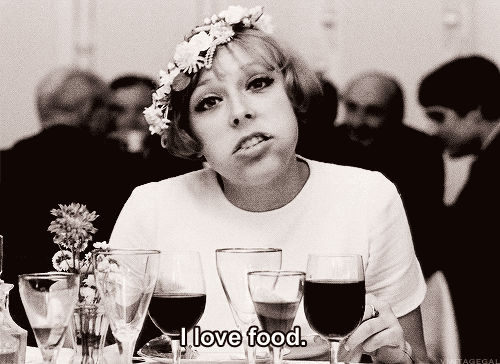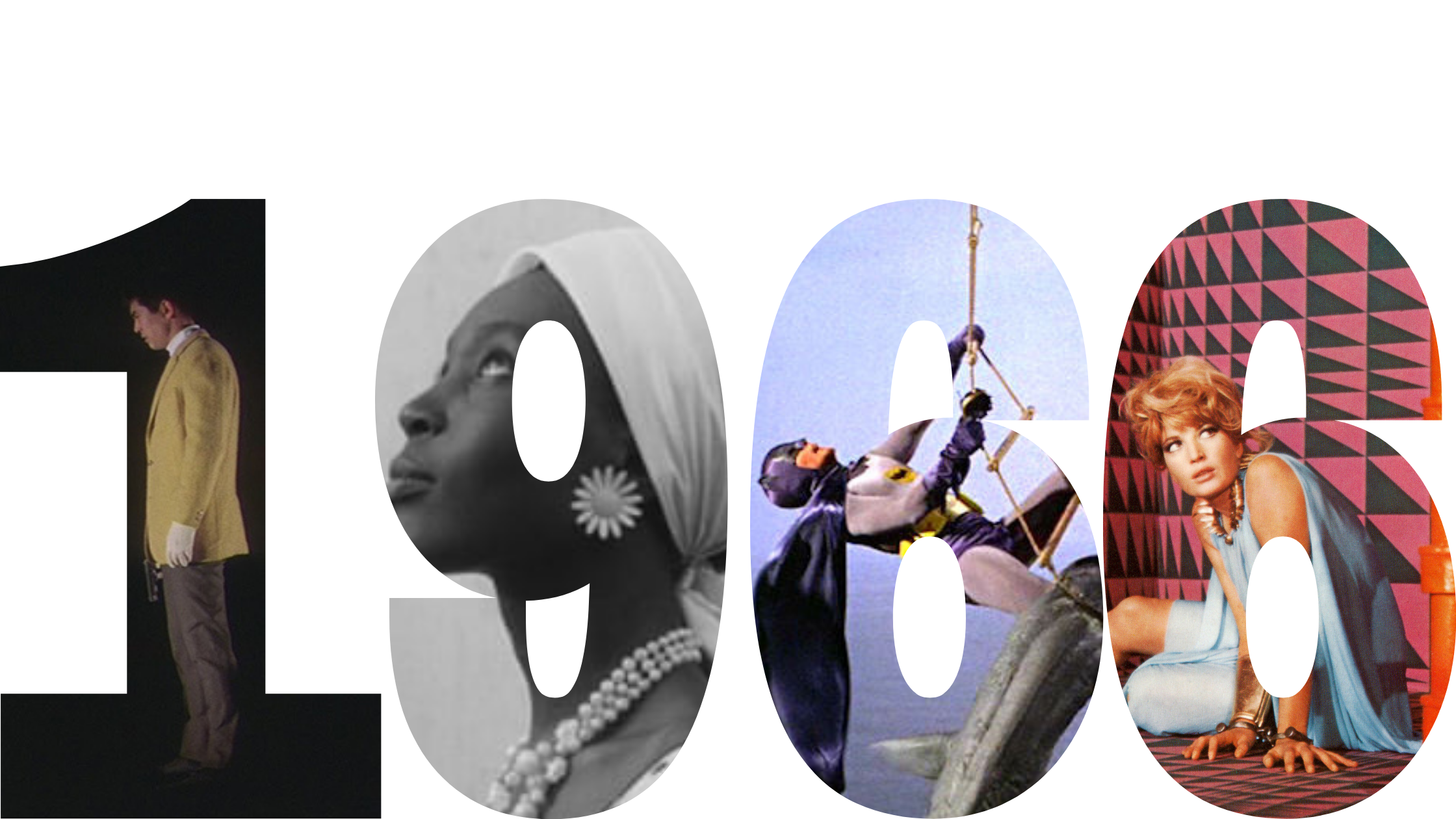Ride in the Whirlwind (1966): the people demand more Harry Dean Stanton!
Ride in the Whirlwind // dir. Monte Hellman // United States
Ride in the Whirlwind // dir. Monte Hellman // United States
ooh buddy. Continuing on with my 1966 series, I decided to check out this western (there is another 1966 western that lives inside my brain that will be subject to an extensive post at some point: Duel at Diablo).
I was not expecting
a) to be truly moved by it
b) to be actually impressed by my nemesis Jack Nicholson
c) to find my fall 2020 fashion inspo!
Yet, here we are and 2020 gives me one more shocker. Let’s start with point c.
Harry Dean Stanton’s look, minus the guns it must be said, are absolute goals: scuffed boots, striped trousers, white button up, slouchy vest, jaunty bandana on the neck, and—crucially—eyepatch! (the hat may be a step too far for me to pull off sadly)
Everyone looks cool in an eyepatch: Bret from Flight of the Conchords, Snake Plissken, Rosamund Pike in that biopic I have in my watchlist because Rosamund Pike has an eyepatch in it…
That is the kind of low upkeep/high impact look I am in the mood for this season. Harry Dean, we STANton! (I’d show myself out, but this is my blog. Sorry.)
For real, I love Harry Dean Stanton and the chaotic energy he brings to every piece. I love him in the same way I love the prince of the darting eyes and villainous 1960s tv guest spots—Bruce Dern. <3
Watching HDS brought back a fun memory of visiting the Velveteria in LA’s Chinatown last year with a pal. An entire “museum” dedicated to velvet paintings, and Harry Dean Stanton had his own little corner.
I would also like to give a style shout-out to Millie Perkins’ relatable eyebrows.
And, now for a short excursion to point B, I was genuinely fine with Jack Nicholson in this film he wrote and produced as well as starred in. That was entirely unexpected from me, and honestly, maybe he could have quit here while he was ahead? No need to disturb a generation with the injustice of Something’s Gotta Give (2003).
In this film, his Wes had little to say, but was still the character most invested in having a life and being human.
^a quiet moment of all-too-human grief that hit perfectly
Ride in the Whirlwind has a spare, austere, empty quality that works a charm at taking the absolute air out of western cowboy mythic cinema. It very nearly plays as a Twilight Zone-esque existential horror. Perhaps it is too slow, too inactive to get there, but it is certainly concerned with the existential.
The western cowboy myth relies on the denial of genocide. The refashioning of conquest as a noble fight. Destruction as romantic adventure.
Westerns are the American fairy tales: they have form, convention, and style that can reach the height of cinematic aesthetic pleasure. Westerns make up some of the most aesthetically satisfying films. The style can be so strong it holds back any questions about truth and reality.
Time and existence is narrowed to right and wrong / good and evil, and there is a purpose for each person in the myth (even if that purpose is just to die as third henchman bank robber).
What Ride in the Whirlwind does is pull us out of that that systematic and set convention, and ask the question, “What if there is no point?”
I was struck by how much pointless death there was in this film, and it’s honestly not a high body count western. Nor, are we in basically any way given reason to empathize or care about most of the characters who die. But the feeling of futility just hangs there the entire runtime.
The truth of this culture and society built on genocide is corrupted and listless humans.
Everyone in the film is going through the motions of life. Sure, everyone fights to survive and outlive their opponents, but it seems a fight just to continue existing—there is no actual desire or spark or purpose.
Wes and his two companions are mistaken as thieves and pursued, because of a citizens justice vigilante gang (chilling!!!)that only exists to find and kill methodically all who have wronged “society.” The actual thieves are thieves because it is how they exist and survive in society. There’s no grand plan here.
The settler cabin Wes and Vern (Cameron Mitchell) take refuge in is occupied by a man, a woman, and their teen daughter. None of them have a single spark of life between them. The man hacks endlessly away at a stump in the yard, stopping only when his daughter comes out to prepare his wash basin and call him into the meal his wife has prepared. All three living in endless patterns of motions.
Wes asks Abigail her age, and her response is devoid of anything.
They are just three more ghosts living in a world with no value for humans, or anything else. Humanity was lost when a world was built on active genocide and bloodshed and destruction, and then the denial—first that it was wrong, and then that it happened.
The one incongruous note in this all is Wes. He doesn’t have purpose or direction, but he is stubbornly connected to the tangible. He complains about being tired, he complains about blisters, he complains about being weak, he complains about being hungry, he complains about being bored, and he complains about being sad. It gets almost annoying, and the other characters react in as much bewilderment as they can muster in their apathy. Why does Wes care about blisters on his feet? Why does it matter?
Wes’ restlessness holed up in the cabin for mere hours is fascinating, and honestly all-too-familiar to those of us who have been primarily confined to our homes for months and months now.
I have been unemployed for a couple of months now, and Wes’ unease about inactivity hits real well. I am 26, and I had previously been actively employed since I was 13 years old. In our society, production is the point. And, being removed from productivity removes a sense of purpose—removes my pattern of motions.
To actually and fully break with the motions is to claim dignity and humanity and community. People over product. To acknowledge and remove the evil, corrupted foundations of society and radically build new ways. I hope we get there.
I also wanted to note for this film, that a Black man is lynched (alongside a white man), and that is a moment of historically, violent imagery that is included here somewhat perfunctorily in the same fashion as the rest of the inhumane, listless violence. The lynching has much higher levels of white supremacist/racist contexts that are not explored in this film at all (except through whatever the viewer brings to it). There should be purpose to including such a scene of particular violence, and I do not think this film hit that mark at all.
-Meg
Harry Dean Stanton and Rupert Crosse love to stay safe wearing their masks in public! <3
Daisies (1966): love to scam for food with my ladies
Sedmikrásky (Daisies) // dir. Věra Chytilová // Czechoslovakia
Sedmikrásky (Daisies) // dir. Věra Chytilová // Czechoslovakia
For a movie with such a critical reputation, instantly recognizable imagery, and a full eleven years sitting on my watchlist—I was still honestly surprised and overwhelmed with delight finally seeing Daisies for the first time. An absolute dream.
And, an absolutely perfect film to begin on this 1966 series—it bursts with everything I love about 1966 (and life in general): garish colors, INTENSE FASHION, chaos, a political spirit, and girls and women having a great time.
I want to focus on that last piece in particular here.
I do not feel able to competently address the political elements of this film in the context of the Soviet Union or critiquing government systems, so I am not going to even try. Instead, I want to talk to about women gorging themselves on food!
The anarchy of young women out to “spoil” themselves by indulging. It brings me pure delight. With her reckless two Maries, Chytilová taps into those deepest felt feelings of femme-socializing: the safety, weightlessness, and mutual joy. Those moments of feeling powerful together, and outside the constraints of this world. It is all too fleeting though. The world is there, and it does crush. Marie I and Marie II scam the broken system of patriarchal power to feed themselves, and have a wonderful time as long as they keep eating. The pressure remains though; the melancholy returns—especially in the few solitary moments they spend apart.
An unchanged system of power always reverts in the end. The world would explode if you just let young women live unconstrained! THE HORROR! THE TERROR! THE GLUTTONY! THEY ARE HAVING A GREAT TIME!
Every film that truly understands friendships between women has scenes of women eating food together. We love to snack! We love to feast! We love apples and giant jars of pickles (literal pickles). This deep into pandemic lockdown, I am 100% ready for a disgusting egg-milk bath with my best friend while we chow down on a loaf of bread. Please!
This was one of the most delicious looking food movies I have ever seen. I was famished almost instantly, and had to make a late night snack to survive the onslaught of the senses. I am already willing to put it as #2 to Tampopo’s undefeated food movie champ.
Maslow’s Hierarchy of Needs: 1) Friendship, 2) Food, 3) Scamming Rich Old Creepy Men, 4) Societal Chaos
I love to vicariously experience reckless abandon in these (troubled and) isolated times. I know it sounds indulgent, but a communal feast with my femmes is the cure for the symptoms of what ails my soul at most times (a brutal, inhumane, capitalist, white supremacist patriarchy).
All I really want right now is just canned pumpkin, so I can make decadent soft pumpkin cookies, but the pumpkin harvest is late and there is no canned pumpkin. I frantically searched the grocery store shelves before googling “CANNED PUMPKIN SHORTAGE” for my answer. They say the pumpkin is coming…
Joyful anarchy is never quite divorced from consequences, whether societal or communal, but it can be a delicious chaotic break.
-Meg
1966: cinema loud
1966 is my favorite year in film: across all genres, filmmakers, and languages. 1966 cinema is stylish, wild, inventive, thrilling, and anarchistic.
There are films going on pure vibes and bright colors (ahem Modesty Blaise) and significant cultural works like Ousmane Sembène’s ‘La Noire de...’ (Black Girl) with its anti-colonial perspective that still reverberates. 1966 is a year with films outside the US-Euro stronghold reaching both prominence and global audiences. For me, it’s a year that typifies, at their best, movies as entertainment spectacle, as an art medium, and as a carrier of empathy.
I have made a list of about sixty 1966 releases to watch and profile here (twenty being rewatches, and forty being new-to-me).
Looking forward to a year full of unconstrained films!
1) Daisies





